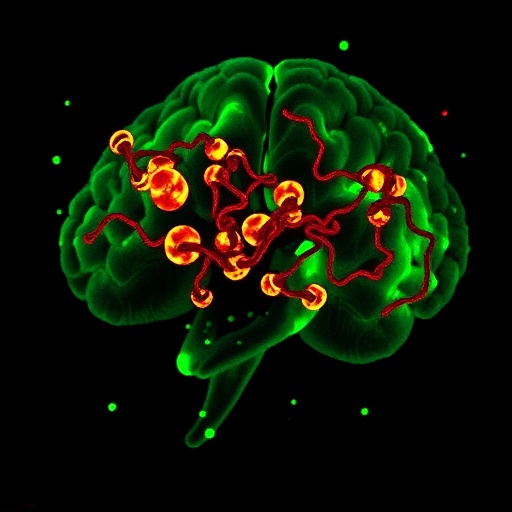In a groundbreaking study published in 2025, researchers led by Eteraf-Oskouei and colleagues delve into the complex realm of opioid dependence, specifically examining morphine withdrawal symptoms through the lens of natural compounds. The research primarily investigates the preventive effects of crocin and meloxicam on these withdrawal symptoms in a controlled mouse model. This exploration into the biochemical pathways and behavioral implications offers new hope in the struggle against opioid addiction and presents a compelling narrative on the potential of natural remedies in pharmacology.
The researchers began their investigation by contextualizing the challenges posed by opioid withdrawal. Withdrawal from morphine often manifests through a constellation of symptoms, including anxiety, pain, and physiological changes. These symptoms can lead to significant suffering for those attempting to discontinue use and often prompt relapse, making management a critical area of research in addiction therapy. Understanding the biological mechanisms behind these withdrawal symptoms is key to developing effective treatment strategies.
Crocin, a natural compound derived from saffron, has been touted for its neuroprotective and anti-inflammatory properties. The study explores its potential to alleviate the distress associated with morphine withdrawal. Its efficacy as a therapeutic agent is underscored by a growing body of evidence pointing to its ability to modulate neurotransmitter systems implicated in addiction and withdrawal. In the study, the administration of crocin showed promising results in mitigating anxiety-like behaviors and reducing somatic symptoms in withdrawing mice.
Meloxicam, a non-steroidal anti-inflammatory drug (NSAID), is widely used for its analgesic and anti-inflammatory properties. Traditionally utilized in pain management, its exploration in the context of opioid withdrawal symptoms reveals an innovative approach to treatment. The researchers hypothesized that meloxicam could provide dual benefits by addressing both the pain associated with withdrawal and the biochemical instability that ensues during this critical time. The integration of meloxicam into their treatment regimen revealed a marked decrease in withdrawal-induced agitation, further demonstrating its therapeutic potential.
The methodology employed in this study was meticulously designed to ensure comprehensive examination of the research questions. Mice were subjected to a controlled morphine withdrawal paradigm, during which behavioral assessments were performed to evaluate anxiety-like responses. The biochemical analysis included monitoring changes in neurochemical markers associated with stress and withdrawal, creating a robust framework for understanding the underlying mechanisms through which crocin and meloxicam operate.
Behaviorally, the mice treated with crocin exhibited reduced anxiety-like behaviors, suggesting a potential anxiolytic effect. This finding aligns with prior research indicating that crocin can influence serotonergic pathways, a critical system often dysregulated during withdrawal. The precise pathways involved are likely multifaceted, involving interactions with both dopamine and serotonin systems, which play pivotal roles in mood regulation and addiction behaviors.
On the biochemical side, the study provided insights into how crocin and meloxicam influence neurochemical changes during withdrawal. The modulation of inflammatory markers revealed a reduction in pro-inflammatory cytokines, which are often elevated during withdrawal episodes. These findings illuminate the potential for crocin as an adjunct therapy, targeting inflammatory processes that exacerbate the withdrawal syndrome. The reduction in inflammation not only supports behavioral improvements but indicates a broader role for crocin in neuroprotection.
Moreover, the study underscores the significance of combining pharmacological agents to enhance therapeutic outcomes. The synergistic effect observed when crocin and meloxicam were co-administered provides a compelling argument for multi-modal treatment approaches in managing opioid dependence. This combination could address both the psychological and physiological aspects of withdrawal, making it a promising avenue for future research and clinical applications.
The implications of these findings extend beyond the laboratory. As the opioid epidemic continues to affect countless individuals worldwide, alternative treatment strategies that minimize reliance on synthetic drugs are essential. Natural compounds like crocin have the potential to fill critical gaps in opioid withdrawal management, offering a more holistic approach to addiction treatment. The favorable results observed in this study provide a scientific foundation for further exploration into the clinical applicability of these compounds in human subjects.
As addiction research continues to evolve, this study serves as a reminder of the importance of interdisciplinary approaches. Collaboration across pharmacology, neuroscience, and psychiatry will be essential in translating these findings into viable treatment options for vulnerable populations. Future studies should prioritize clinical trials that assess the efficacy and safety of crocin and meloxicam in humans, bridging the gap between preclinical promise and therapeutic reality.
Ultimately, this research not only sheds light on the potential benefits of crocin and meloxicam in alleviating morphine withdrawal symptoms but also highlights the urgent need for innovative solutions to the opioid crisis. By exploring natural remedies and their mechanisms, researchers may uncover valuable insights that lead to safer and more effective treatments for addiction. The journey toward a comprehensive understanding of withdrawal syndromes continues, with this study marking a significant step in the quest for better therapeutic options.
As the scientific community reflects on the findings presented by Eteraf-Oskouei et al., it is essential to acknowledge the broader implications of their work. With a landscape of addiction treatment in flux, the rise of integrative approaches that encompass both traditional and alternative therapies could redefine the paradigms of care. The promise of crocin and meloxicam invites optimism and strategic investment in future research avenues, signifying a proactive stance in combating addiction through multifaceted methodologies.
In conclusion, the study conducted by Eteraf-Oskouei and colleagues stands as a pivotal contribution to ongoing efforts aimed at addressing the complex challenges of morphine withdrawal. By integrating biochemical insights with behavioral assessments, the research paves the way for novel treatment protocols that are both effective and rooted in the principles of natural medicine. As the dialogue on addiction treatment evolves, this research remains a beacon of hope for a future where individuals can reclaim their lives from the grips of opioid dependency through innovative and compassionate care strategies.
Subject of Research: Effects of crocin and meloxicam on morphine withdrawal symptoms
Article Title: Preventive effects of crocin and meloxicam on morphine withdrawal symptoms in mice: behavioral and biochemical insights
Article References:
Eteraf-Oskouei, T., Mahmoudi Gharehbaba, A., Majidpour, S. et al. Preventive effects of crocin and meloxicam on morphine withdrawal symptoms in mice: behavioral and biochemical insights.
BMC Pharmacol Toxicol 26, 159 (2025). https://doi.org/10.1186/s40360-025-00999-9
Image Credits: AI Generated
DOI: 10.1186/s40360-025-00999-9
Keywords: morphine withdrawal, opioid addiction, crocin, meloxicam, natural remedies, biochemical insights, behavioral assessment, inflammatory cytokines, neurotransmitter systems, treatment strategies, addiction management.
Tags: alternative therapies for opioid withdrawalanti-inflammatory effects of meloxicambehavioral implications of morphine withdrawalbiochemical pathways in addiction therapychallenges of opioid withdrawal symptomsCrocin and meloxicam effects on morphine withdrawalEteraf-Oskouei opioid study findingsmouse model research in addictionnatural remedies for opioid dependenceneuroprotective properties of crocinopioid addiction researchpharmacological potential of saffron compounds





